Photo

Diplomatic Maneuvers
Mr. Schuyler utilized the services of two interpreters during his interactions with the local authorities. One, a young Bulgarian from Robert College, eloquently conveyed pleasant messages and compliments in Turkish. The other, a Greek named Antonio, known for his stern and forceful manner, was summoned for less agreeable conversations.
A Display of Authority
It was a moment of amusement when Antonio emerged from Mr. Schuyler’s quarters and sternly addressed the Mudir about the deplorable state of the roads. The Mudir, caught off guard by the directness of the inquiry, nervously defended himself, citing his recent appointment as the reason for the poor road conditions.
A Test of Responsibility
Antonio, acting as the intermediary, relayed the Consul’s dissatisfaction with the perceived lack of effort to alleviate the suffering of the local populace. The Mudir, unapologetic, attributed their misery to their own actions, demonstrating a lack of empathy for their plight Private Guide Turkey.
A Shift in Tone
In response, Antonio conveyed the Consul’s stern admonition, emphasizing the Sultan’s desire for swift relief of the people’s suffering and hinting at potential repercussions for negligent officials. This exchange, conducted through Antonio’s authoritative demeanor, lasted for thirty minutes, leaving the Mudir visibly subdued by the diplomatic pressure exerted upon him.
Through skillful diplomatic maneuvering, Mr. Schuyler effectively conveyed the Consul’s concerns and expectations to the Mudir, showcasing the power dynamics at play in their interactions. Antonio’s firm and uncompromising approach left a lasting impression, ensuring that the Mudir understood the gravity of the situation and the need for immediate action.
0 notes
Photo
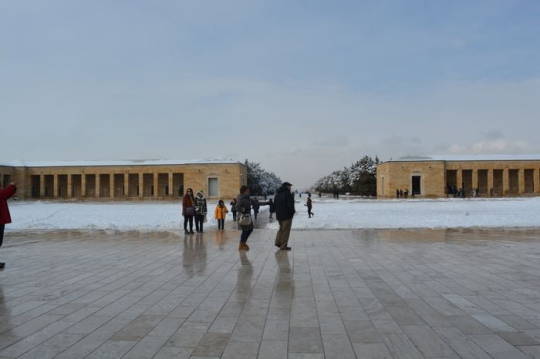
Ceremonial Attire
Upon reaching the Grand Vizier’s palace, the Admiral was first dressed in brocaded fur, followed by the Chief Secretaries, the religious leader, and the Governor of Istanbul, who were each adorned in large-sleeved sable furs.
Honors and Traditions
Kaymakam Pasha then visited the Hall of Audience, where he received greetings and applause. Following tradition, high officials were adorned in robes of honor (caftans) according to a protocol read by the Minister of Finance Istanbul Fun Tours.
Noble Mandate
A noble mandate was issued to the Grand Vizier’s Palace on the day after the Imperial Accession to announce that the Valide Sultan (Queen Mother) of Sultan Selim III would honor the New Imperial Palace (Topkapi Palace) by visiting from the Ancient Palace in Beyazit on the 15th day of the month. Additionally, it was noted that the Bairam ceremonial parades on the 17th day had been recorded in protocol books.
Tradition of Burials
Most Ottoman Sultans not only ascended the throne but also followed ancient protocol by being buried in tombs. This tradition symbolized the transition from one Sultan’s reign to another, highlighting the cycle of succession and continuity.
Symbolism of the Throne
The golden throne placed before the Gate of Happiness served as a symbol of magnificence for one Sultan’s reign while marking the solemn departure of another Sultan into eternity, all within a span of a few hours.
Sultan Selim III’s Challenges
Sultan Selim III, known for his reformist tendencies and openness to novelty, faced challenges in implementing reforms, particularly in modernizing the army and navigating relationships with Western powers amidst the backdrop of historical traditions and resistance to change.
0 notes
Photo

Ceremonial Attire
Upon reaching the Grand Vizier’s palace, the Admiral was first dressed in brocaded fur, followed by the Chief Secretaries, the religious leader, and the Governor of Istanbul, who were each adorned in large-sleeved sable furs.
Honors and Traditions
Kaymakam Pasha then visited the Hall of Audience, where he received greetings and applause. Following tradition, high officials were adorned in robes of honor (caftans) according to a protocol read by the Minister of Finance Istanbul Fun Tours.
Noble Mandate
A noble mandate was issued to the Grand Vizier’s Palace on the day after the Imperial Accession to announce that the Valide Sultan (Queen Mother) of Sultan Selim III would honor the New Imperial Palace (Topkapi Palace) by visiting from the Ancient Palace in Beyazit on the 15th day of the month. Additionally, it was noted that the Bairam ceremonial parades on the 17th day had been recorded in protocol books.
Tradition of Burials
Most Ottoman Sultans not only ascended the throne but also followed ancient protocol by being buried in tombs. This tradition symbolized the transition from one Sultan’s reign to another, highlighting the cycle of succession and continuity.
Symbolism of the Throne
The golden throne placed before the Gate of Happiness served as a symbol of magnificence for one Sultan’s reign while marking the solemn departure of another Sultan into eternity, all within a span of a few hours.
Sultan Selim III’s Challenges
Sultan Selim III, known for his reformist tendencies and openness to novelty, faced challenges in implementing reforms, particularly in modernizing the army and navigating relationships with Western powers amidst the backdrop of historical traditions and resistance to change.
0 notes
Photo
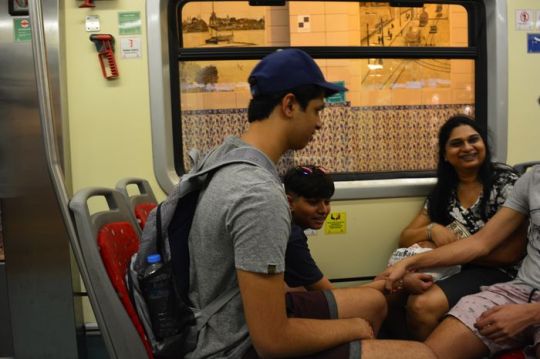
The Challenges of Organizing an Insurrection
Inadequate Organization of the Bucharest Committee
The events surrounding the attempted insurrection reveal significant challenges in organization and leadership. The rising occurred only in a few places and lacked coordination, suggesting that the Bucharest Committee was inexperienced and poorly organized. Their attempt to incite a widespread revolt failed as the majority of the population remained passive, resulting in devastating consequences.
Misguided Attempts at Provocation
The Bucharest Committee’s strategy relied on persuading a handful of villages to rise up, hoping that it would spark a general insurrection across the country. However, without proper leadership and organization, the rest of the population remained inactive, leading to their quiet slaughter. This lack of unified action and leadership proved detrimental to the success of the uprising.
Potential for Success with Proper Organization
Had the uprising been properly organized with widespread participation and effective leadership, the outcome could have been different. A well-coordinated revolt could have forced the Turks to retreat from significant portions of the country, particularly north of the Balkans. The inability to effectively combat resistance while maintaining communication lines through hostile territory would have severely weakened Turkish control Bulgaria Tours.
Panagurishti’s Involvement in the Revolt
The enthusiasm for revolt was evident in Panagurishti, where even women participated in fortification efforts. However, the amateur fortifications they constructed were inadequate for defense against significant military opposition. These makeshift defenses lacked depth and strategic placement, rendering them ineffective in repelling any serious assault.
Ineffectiveness of the Fortifications
The fortifications in Panagurishti consisted of shallow embankments and ditches, which would have provided minimal protection against enemy attacks. Even if well-constructed, the village’s accessibility from all sides would have rendered the defenses easily flanked and bypassed by enemy forces. Thus, the efforts to fortify the village, while demonstrating enthusiasm, ultimately proved futile in providing meaningful defense.
The attempted insurrection highlighted the challenges of organizing a successful revolt. Inexperienced leadership, inadequate organization, and ineffective fortifications hindered the efforts to incite widespread rebellion. While enthusiasm and willingness to resist were present, they were not enough to overcome the lack of proper planning and leadership required for a successful uprising.
0 notes
Photo

Rewarding the Ruthless
Promotion for Atrocities
In a glaring display of injustice, perpetrators of heinous crimes are not only left unpunished but are instead rewarded with positions of power and influence. Chefket Pacha, responsible for the brutal massacre in Bazardjik village, where nearly all inhabitants met a gruesome fate, should have faced legal consequences for his actions. Instead, he was elevated to a prominent position in the Sultan’s Palace in Constantinople. Similarly, Achmet Aga, a captain of Bashi-Bazouks notorious for his savagery, sought to unleash further terror in Philippopolis but was only deterred by the intervention of a now-removed governor. Despite his barbaric acts, including the slaughter of 8,000 innocents in Batak and the burning alive of 200 women and children, Aga was promoted to the rank of Pacha. In a cruel twist of irony, he was even appointed to a commission tasked with prosecuting and punishing fellow Bashi-Bazouks. Their promotions serve as a grotesque mockery of justice, rewarding those who carried out the government’s wishes or implicit directives.
Blame Deflection
Efforts to shift blame onto the Bulgarian people for instigating atrocities fall flat in the face of overwhelming evidence. Even Lord Derby, citing Sir Henry Elliot, erroneously claimed both sides were equally culpable. However, the credibility of such assertions is dubious at best. Prior to Mr. Baring’s arrival, the English Government lacked reliable sources of information, rendering any purported evidence of Bulgarian wrongdoing suspect. The absence of impartial agents on the ground underscores the fallacy of such assertions Guided Turkey Tours .
Seeking Truth Amidst Injustice
As narratives of brutality unfold, it becomes increasingly evident that justice is a scarce commodity in these tumultuous times. While the perpetrators of unspeakable horrors are rewarded, innocent victims are left to suffer without recourse. In the absence of unbiased investigations and accountability, the cycle of violence perpetuates, further entrenching the culture of impunity. As voices of dissent grow louder, the need for genuine accountability and redress becomes ever more urgent. Only by confronting the reality of injustice can steps toward true reconciliation and healing begin.
0 notes
Photo
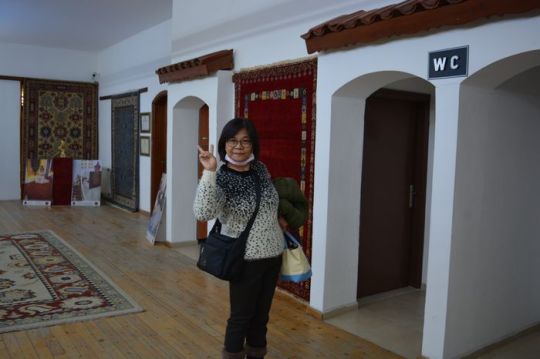
Economic Challenges and Shifts Between the Wars
Economic Challenges and Shifts Between the Wars (1918-1941)
Post-World War I Industrial Landscape (1918-1920)
After World War I, Bulgarian industry comprised 1,544 enterprises with 55,717 workers and 5,083,000 leva of invested capital. The Stambolisky government took measures to eliminate grain speculation, fostered cooperatives, and created a consortium with a grain export monopoly. Labor conscription was introduced to facilitate significant projects like railroads, highways, and canals. Land redistribution aimed at providing poor peasants with agricultural opportunities. The establishment of new industrial enterprises and joint-stock companies marked a period of progress from 1920 to 1923, despite the global economic crisis.
Stabilization and Growth (1926-1930)
A period of stabilization occurred during 1926-1929 under Liapchev’s government. By 1930, industrial production had risen to 7,320,000,000 leva. Joint-stock companies proliferated, reaching 622 by the end of 1928, with substantial foreign capital investments. However, the worldwide depression of 1929-1933 impacted Bulgaria’s economy. Foreign trade, the gold backing of the lev, and reparations obligations were severely affected. The rural sector faced challenges, and the government struggled with economic adversity. The tobacco industry thrived, and legislation aimed at addressing unemployment and debtor liabilities was implemented Guided Istanbul Tour.
Economic Challenges and German Orientation (1933-1941)
The global economic crisis of 1937 added further challenges. Bulgaria’s foreign policy shifted towards Germany due to economic interdependence. Germany relied on Bulgaria’s agricultural produce, and Bulgaria needed the German market for agricultural exports and to acquire machine products. This economic partnership intensified as shown by the increase in export and import percentages to Germany between 1936 and 1939. By the beginning of World War II, Bulgaria’s economic dependence on Germany was significant, with 72.5% of imports and 70.2% of exports involving Germany in 1941. This economic situation persisted until the Soviet army crossed the northern frontier in 1944.
0 notes
Photo

Economic Challenges and Shifts Between the Wars
Economic Challenges and Shifts Between the Wars (1918-1941)
Post-World War I Industrial Landscape (1918-1920)
After World War I, Bulgarian industry comprised 1,544 enterprises with 55,717 workers and 5,083,000 leva of invested capital. The Stambolisky government took measures to eliminate grain speculation, fostered cooperatives, and created a consortium with a grain export monopoly. Labor conscription was introduced to facilitate significant projects like railroads, highways, and canals. Land redistribution aimed at providing poor peasants with agricultural opportunities. The establishment of new industrial enterprises and joint-stock companies marked a period of progress from 1920 to 1923, despite the global economic crisis.
Stabilization and Growth (1926-1930)
A period of stabilization occurred during 1926-1929 under Liapchev’s government. By 1930, industrial production had risen to 7,320,000,000 leva. Joint-stock companies proliferated, reaching 622 by the end of 1928, with substantial foreign capital investments. However, the worldwide depression of 1929-1933 impacted Bulgaria’s economy. Foreign trade, the gold backing of the lev, and reparations obligations were severely affected. The rural sector faced challenges, and the government struggled with economic adversity. The tobacco industry thrived, and legislation aimed at addressing unemployment and debtor liabilities was implemented Guided Istanbul Tour.
Economic Challenges and German Orientation (1933-1941)
The global economic crisis of 1937 added further challenges. Bulgaria’s foreign policy shifted towards Germany due to economic interdependence. Germany relied on Bulgaria’s agricultural produce, and Bulgaria needed the German market for agricultural exports and to acquire machine products. This economic partnership intensified as shown by the increase in export and import percentages to Germany between 1936 and 1939. By the beginning of World War II, Bulgaria’s economic dependence on Germany was significant, with 72.5% of imports and 70.2% of exports involving Germany in 1941. This economic situation persisted until the Soviet army crossed the northern frontier in 1944.
0 notes
Photo

The Art of Mangal Beyond Barbecue
Turkish Love for Picnics and Mangal
Originating from the French language, the word ‘picnic’ finds its true passion in the hearts of the Turkish people. While cold cuts were once the preferred picnic fare, modern times require safety and cleanliness in these areas. However, the love for mangal (barbecue) remains steadfast, showcasing a unique culinary culture.
Evolution of Mangal Technology
As technology advances, traditional coal-fired mangals are making way for electric or gas-powered alternatives. Easily set-up mechanisms claim to replicate the distinctive taste of coal-fired mangal, enabling enthusiasts to enjoy this feast at home. The use of cast iron grills and pans adds another layer of versatility to the mangal experience.
International Mangal Culture
While Turkey is a frontrunner in mangal enthusiasm, it is not alone in its love for unlimited meat. Many countries worldwide share a passion for barbecues, each with its unique rituals and variations. Mangal transcends borders, bringing people together over the joy of grilling Guided Tours Turkey.
Tips for Eco-Friendly Mangal
Ensuring a safe and environmentally friendly mangal experience requires attention to detail. Here are some tips:
Prepare ingredients and materials in advance.
Estimate the right amount of coal to avoid wastage.
Reach high temperatures before grilling.
Keep the grill clean to prevent food sticking.
Oil the wires before grilling to avoid sticking.
Use tongs instead of forks for turning.
Cook thick meat pieces by covering.
Allow grilled meat to rest before serving.
Never leave the barbecue unattended for safety.
Mangal Culture Down Under
Australia and New Zealand embrace the barbecue culture with enthusiasm. Influenced by their green outdoor lifestyle, Australians often have ready barbecue setups in their gardens. Commonly cooked items include sausages, steak, sticky meats, hamburgers, shrimps, kangaroo meat, chicken, and mushrooms. Parks equipped with barbecue systems offer a communal space for people to enjoy grilling their favorite meats.
Mangal culture extends beyond borders, creating a shared experience that brings people together to celebrate good food, outdoor gatherings, and the joy of grilling.
0 notes
Photo
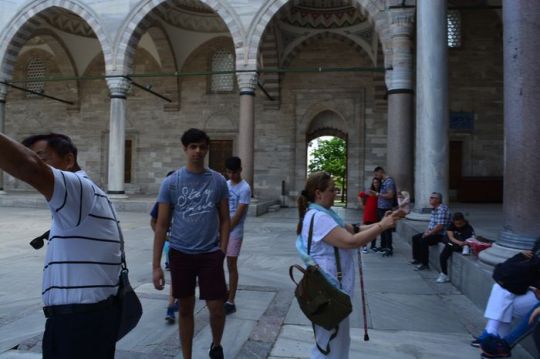
A Nation Held Hostage in Tamboli
A Reign of Fear and Desperation
This article unravels the grim reality faced by the residents of Tamboli, a community ensnared in a web of terror and despair. From the ominous figure of Galib Bey to the Kaimakam’s ineffectual authority, the people of Tamboli grapple with a nightmarish existence, haunted by the specter of past massacres and the looming threat of more violence.
A Reign of Fear
Galib Bey’s ominous presence looms large over Tamboli, striking fear into the hearts of both the populace and the supposed authorities. The Kaimakam, entrusted with upholding justice, appears equally afraid of this influential figure. The oppressive climate created by Galib Bey fosters an environment where seeking justice seems futile, perpetuating a cycle of impunity.
Recurring Nightmares of Batak
The scars of Batak, Otluk-kui, and Bazardjik cast a long and haunting shadow over Tamboli. Threats of more massacres, freely issued by the Turks, plunge the entire country into a perpetual state of dread. The justified fear of recurring violence, driven by the historical conduct of the Turks, perpetuates an atmosphere of continuous terror.
Plight of the Pillaged and Robbed
Amid the atmosphere of fear and the looming threat of violence, thousands of survivors find themselves not only mourning lost loved ones but grappling with the aftermath of pillaging and robbery. Homes reduced to ashes, possessions looted, and lives shattered—this is the harsh reality endured by those fortunate enough to escape the massacres with their lives Tour Bulgaria.
Broken Promises from Turkish Authorities
Despite promises of aid, restitution, and reconstruction, the Turkish authorities offer nothing but empty assurances. The cries for help fall on deaf ears as the beleaguered residents of Tamboli find themselves abandoned by the very entities meant to protect and support them. The broken promises exacerbate the desperation of those without shelter, sustenance, or hope.
A Plea for Liberation
As Tamboli remains shackled by fear, violence, and broken promises, this article concludes with a heartfelt plea for liberation. It calls attention to the urgent need for international intervention, demanding justice, aid, and reconstruction. The cries of Tamboli echo the broader call for humanity to stand against oppression and work towards a future where fear gives way to freedom and despair transforms into hope.
Breaking Free from the Chains of Despair
The narrative concludes with an epilogue envisioning Tamboli breaking free from the chains of despair. It paints a picture of a community rising from the ashes, empowered by justice, and rebuilding with the support of a compassionate global community. In this vision, Tamboli transforms into a symbol of resilience, inspiring hope for a brighter future.
0 notes
Photo
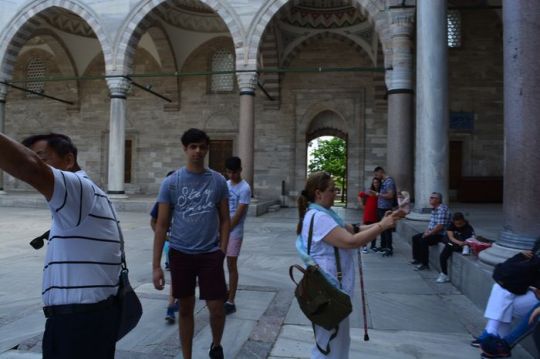
A Nation Held Hostage in Tamboli
A Reign of Fear and Desperation
This article unravels the grim reality faced by the residents of Tamboli, a community ensnared in a web of terror and despair. From the ominous figure of Galib Bey to the Kaimakam’s ineffectual authority, the people of Tamboli grapple with a nightmarish existence, haunted by the specter of past massacres and the looming threat of more violence.
A Reign of Fear
Galib Bey’s ominous presence looms large over Tamboli, striking fear into the hearts of both the populace and the supposed authorities. The Kaimakam, entrusted with upholding justice, appears equally afraid of this influential figure. The oppressive climate created by Galib Bey fosters an environment where seeking justice seems futile, perpetuating a cycle of impunity.
Recurring Nightmares of Batak
The scars of Batak, Otluk-kui, and Bazardjik cast a long and haunting shadow over Tamboli. Threats of more massacres, freely issued by the Turks, plunge the entire country into a perpetual state of dread. The justified fear of recurring violence, driven by the historical conduct of the Turks, perpetuates an atmosphere of continuous terror.
Plight of the Pillaged and Robbed
Amid the atmosphere of fear and the looming threat of violence, thousands of survivors find themselves not only mourning lost loved ones but grappling with the aftermath of pillaging and robbery. Homes reduced to ashes, possessions looted, and lives shattered—this is the harsh reality endured by those fortunate enough to escape the massacres with their lives Tour Bulgaria.
Broken Promises from Turkish Authorities
Despite promises of aid, restitution, and reconstruction, the Turkish authorities offer nothing but empty assurances. The cries for help fall on deaf ears as the beleaguered residents of Tamboli find themselves abandoned by the very entities meant to protect and support them. The broken promises exacerbate the desperation of those without shelter, sustenance, or hope.
A Plea for Liberation
As Tamboli remains shackled by fear, violence, and broken promises, this article concludes with a heartfelt plea for liberation. It calls attention to the urgent need for international intervention, demanding justice, aid, and reconstruction. The cries of Tamboli echo the broader call for humanity to stand against oppression and work towards a future where fear gives way to freedom and despair transforms into hope.
Breaking Free from the Chains of Despair
The narrative concludes with an epilogue envisioning Tamboli breaking free from the chains of despair. It paints a picture of a community rising from the ashes, empowered by justice, and rebuilding with the support of a compassionate global community. In this vision, Tamboli transforms into a symbol of resilience, inspiring hope for a brighter future.
0 notes
Photo
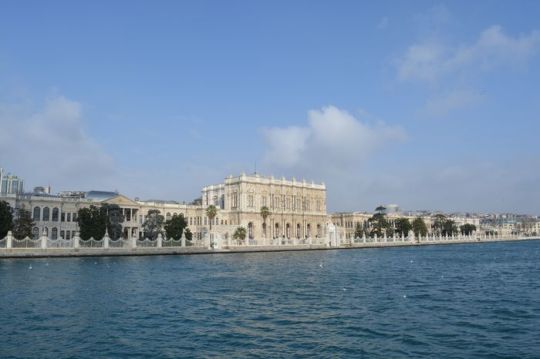
The Specter of Rebellion
Unraveling the Thread of Ferocity and Retribution
Ferocity Unleashed: Otluk-kui, Avrat-Alan, and the Atrocities of Insurrection
In the shadow of the Balkans, the saga of insurrection unfolded, leaving Otluk-kui, Avrat-Alan, and Klissura as the focal points of a rebellion that stained the land with blood. The dynamics of this uprising, however, were far from uniform, and a closer examination of Otluk-kui and Avrat-Alan reveals the divergent paths taken by those who dared to resist.
The killing of armed men, particularly when viewed through the lens of self-defense, draws a sharp contrast to the horrors witnessed in Otluk-kui and Avrat-Alan. The rationalization of self-preservation, though debatable, is a far cry from the merciless acts of ferocity meted out against women and innocent children—acts that transcend even the brutality of wild beasts. Otluk-kui, a village that dared to stand against the encroaching forces, bore witness to the indiscriminate violence directed at its inhabitants, perpetuated under the guise of quelling insurrection.
Avrat-Alan, etched in history as a principal offender in the insurrection narrative, faced a similar fate. The killing of forty Mohammedan gipsies, albeit born out of suspicions and paranoia, laid bare the grim complexities of a rebellion teetering on the edge of moral ambiguity. However, a crucial distinction arose—despite the transgressions, the insurgents refrained from harming women and children, exposing a nuanced morality that unfolded in the crucible of conflict Bulgaria Holidays.
Repression and Retribution Unraveling the Threads of Insurrection
As we delve into the heart of the insurrection, a crucial question emerges: What was the true strength of the rebellion, and how did the authorities choose to quell it? Otluk-kui, Avrat-Alan, Klissura, Strelcha, and Kurlovo bore the weight of the insurrection’s blame, resulting in the ruthless reprisal against seventy innocent villages. The tide of pillaging, burning, and massacres swept over those who had neither part nor hand in the rebellion.
To comprehend the rebellion’s essence, it becomes imperative to scrutinize its genesis and its vigor at the epicenter. Otluk-kui and Avrat-Alan, as the origin points, serve as a microcosm of the larger struggle. The atrocities unleashed upon these villages were not merely punitive measures against rebellion but rather acts of ferocity driven by a desire to crush any form of dissent.
In understanding the nature of repression, one must reckon with the disproportionate response to the perceived threat. The fault lines of insurrection extended far beyond those actively involved, enveloping innocents in a wave of brutality. As we navigate the annals of history, the events in Otluk-kui and Avrat-Alan stand as chilling reminders of the unforgiving nature of retribution and the enduring scars left by conflicts that blur the lines between self-defense and ferocity.
0 notes
Photo
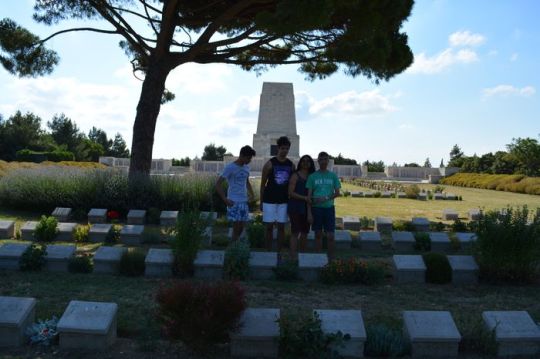
Any European country
A more impudent falsehood was never uttered, even by a Turk. Mr-Schuyler has obtained their tax-list for this year, and finds that there were 1,421 able-bodied men assessed to pay the military exemption tax. This number in any European country would indicate a population of about 15,000, but here it would not give more than from 8,000 to 10,000 souls, all told, and this is the figure at which the population of the place is estimated by the inhabitants, as well as by the people of Pestera.
I think people in England and Europe generally have a very imperfect idea of what these Bulgarians are. I have always heard them spoken of as mere savages, who were in reality not much more civilized than the American Indians; and I confess that I myself was not far from entertaining the same opinion not very long ago.
Bulgarian village
I was astonished, as I believe most of my readers will be, to learn that there is scarcely a Bulgarian village without its school; that these schools are, where they have not been burnt by the Turks, in a very flourishing condition; that they are supported by a voluntary tax levied by the Bulgarians on themselves, not only without being forced to do it by the Government, but in spite of all sorts of obstacles thrown in their way by the perversity of the Turkish authorities ; that the instruction given in these schools is gratuitous, and that all profit alike by it, poor as well as rich ; that there is scarcely a Bulgarian child that cannot read and write; and, finally, that the percentage of people who can read and write is as great in Bulgaria as in England and France.
Do the people who speak of the Bulgarians as savages happen to be aware of these facts? Again, I had thought that the burning of a Bulgarian village meant the burning of a few mud huts that were in reality of little value, and that could be easily rebuilt Guided Istanbul Tour.
I was very much astonished to find that the majority of these villages are in reality well-built towns, with solid stone houses, and that there are in all of them a comparatively large number of people who have attained to something like comfort, and that some of the villages might stand a not very unfavourable comparison with an English or French village.
The truth is that these Bulgarians, instead of the savages we have taken them for, are in reality a hardworking, industrious, honest, civilized, and peaceful people. Now, as regards the insurrection, there was a weak attempt at an insurrection in three or four villages, but none whatever in Batak, and it does not appear that a single Turk was killed here.
0 notes
Photo
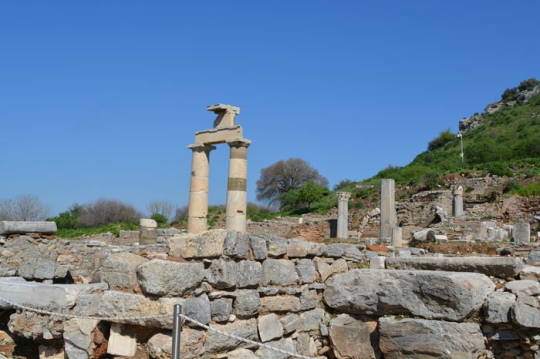
PHILIPPOPOLIS
A two hours’ drive from Philippopolis over a very fair road that led through the rich and fertile valley of the ftfaritza, brought us to what had formerly been the village of Perustitza. This village wTas attacked and burnt by the Bashi-Bazouks. led by one Achmet-Aga, who must not be confounded with another
Acnmet-Aga, still more mtamous, who destroyed Batak. It was a prettily-situated little place, built, as it was, on a low hill that dominated the valley of the Maritza, and enabled its inhabitants to command a view over the rich and luxuriant valley, miles in extent.
It was, however, like so many other places that we have seen, in ruins, not one house remaining standing. We found about a thousand people, of whom the greater part were women and children, who were living in the nooks and corners of the walls, where they had constructed temporary sheds of straw capable of sheltering them from the sun, but not from the rain City Tours Istanbul.
Their present means of existence were principally the new harvest, which they were gathering slowly and painfully, without the aid of their cattle, which had been driven off by their Turkish neighbours, and partly some assistance that was given them by the Governor of Philippopolis. This is the only case we have heard of where the Turkish authorities have given any assistance whatever to the burnt villages. The cattle of the people here were all in the village of Ustuna, not more than three miles distant.
They had been there in the possession of the Turks ever since the middle of May. Not a single head had been restored to the owners, and yet the kind, plausible, earnest, conscientious Mutld-Serif of Philippopolis, with whom we were to dine that night, had assured us only the day before that the cattle had been restored to their proper owners, that the houses were being rebuilt, and help distributed to the needy.
0 notes
Photo
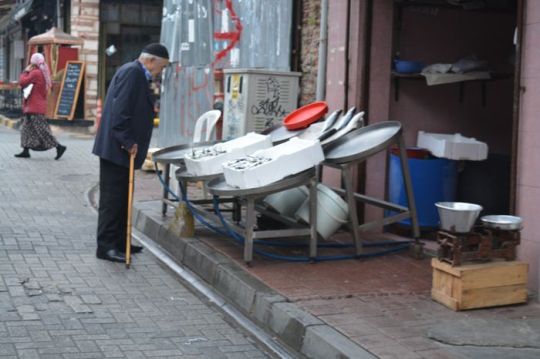
Temple of Diana at Ephesus
The aisles are divided into three bays corresponding to the main dome and two half-domes of the nave. The central bays (M,M) are screened off from the nave by lattice-work (N,N); the four green marble columns in the lower storey of either screen came from the Temple of Diana at Ephesus. The eight columns of porphyry separating the other bays from the four recesses are said to have been brought to Rome by Aurelian from the Temple of the Sun at Baalbek; they were given to Justinian by a patrician lady named Marcia, as a propitiatory offering for the salvation of her soul.
The capitals of all the columns are exquisite specimens of sculpture; and it is hard to tell what particular style of architecture they belong to, unless they are to be called Greco-Gothic. They are in imitation of a thistle, and are adorned with various monograms, chiefly those of Justinian and Theodora. According to an anonymous writer, they were gilt with real gold.
On the ceiling of the apse is a picture of Christ in the act of benediction, already referred to; the twelve medallions over the columns of the third aisle contained the bas-reliefs of the twelve apostles, which have been removed by the Turks. The black and white marble square within the basilica is supposed to be a model of the Temple of Solomon at Jerusalem.
The church was converted into a mosque immediately after the capture of Constantinople by the Turks, and Muhammad II. first said his prayers in it on Friday, 1st June, 1453. Mecca, towards which all Muhammadans turn their faces when praying, bearing S.E. from St. Sophia guided tours istanbul, prevented the Turks from placing the Mihrab (P) (altar), a stone or niche indicating the direction in which Mecca lies, where the Christian altar formerly stood, and necessitated the placing of the Mihrab between the eastern and southern windows, which consequently caused all the carpets and matting to be placed in the same direction, thus producing a strange architectural effect, by conveying the idea that St. Sophia is built with a slight slant.
Maafil-i-Humayun
Near the Mihrab is the Minber (Q) (pulpit), only used on Fridays, from which the Kiatib (reader) clad in a long red robe recites the Hutbeh or prayer for the Sultan. At St. Sophia, as in all other mosques which were formerly Christian churches, the Kiatib grasps a drawn sword as well as a Koran while reciting this prayer. The Maafil-i-Humayun (R), or the Sultan’s private pew, next to the Mihrab, on eight ancient columns, and surrounded by a shining sun, was erected by Messrs. Fossati during the last restoration of the mosque. The little gallery opposite the Minber is for the muezzins or chanters, who chant the service, and is called Maajil. Of the eight green shields high up, that to the right of the Mihrab bears the name of God; the one on the left the name of Muhammad; the remaining six bear respectively the names of the Caliphs, Abu – bekr, Omar, Hassan, Ali, Osman, and Hussein.
The two large alabaster jars for ablutionary purposes, on either side of the main entrance, were brought from the island of Marmora by Sultan Murad III. One of the two Mecca prayer-carpets on the walls, near the imperial pew and the Maafil, is said to have belonged to Muhammad II., and to have been used by him the first time he said his prayers in St. Sophia. On a stone in the wall of the south-east bay, just behind the Maafil, is the print of a bloody hand and its five fingers, ascribed by tradition to Muhammad II., the mark of a hand and five fingers having from the days of Murad I. been adopted as the ruler’s sign- manual, and being the origin of the imperial monogram. In the north-west part of the north aisle is a bronze-sheathed column with a hole in it, which Muhammadans believe to be always damp and to possess miraculous healing powers; sufferers put their finger into the hole and afterwards apply it to the afflicted part of their bodies, in the hope of a miraculous cure.
0 notes
Photo
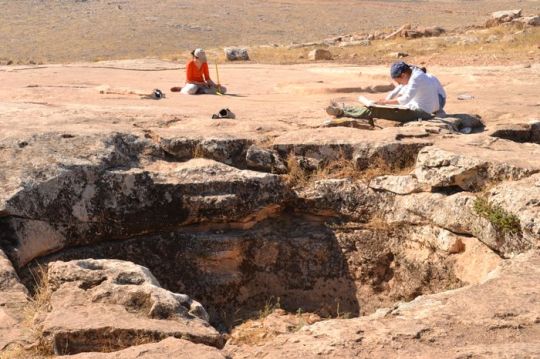
WALL PAINTINGS FROM TOMBS IN THE NECROPOLIS OF SERDICA
The mosaic depicts the early Christian notion of the Paradise – the Garden of Eden, composed of symbols.
2. WALL PAINTINGS FROM TOMBS IN THE NECROPOLIS OF SERDICA 3 fragments
4th century Fresco 0,72 x 1,04 x 0,25 m 0,55 x 0,80 x 0,16 m 1,5 x 0,93 m
From tombs in the Eastern Early Christian necrop-olis around St. Sophia Church in Sofia
Decorated with candelabra and wine sprouts. K. M.
3. WALL PAINTING WITH THE IMAGE OF AN ANGEL
A fragment Triumphal Arch First half of the 4thcentury Fresco 1,40 x 1,60 m
A sector of the murals the interior. Removed from the arch in the Red Church, Perushtitsa, Plovdiv region, in 1920!
An Angel holds a medallion with Agnus Dei in hands raised above his head.
4. EPITAPHSFROMTHEEARLYCHRISTIAN NECROPOLIS OF SERDICA
5th- 6th centuries 4.1 MARBLE 39 x 43 x2,2 cm Inscription in Latin in 3 lines
+ HIC R …V1ESC1T/ T. IOANNES FIUVS bulgaria tour QEORGIINEVSTRIS
Epitaph ofTlitus]Ioanns, son of the illustrious Georgios
The inscription accompanied by a palmette and an ornament
4.2 MARBLE 21 x 51 x 5 cm Inscription in Latin in 3 lines
+ HIC REQUIESCET U1R THEUPREPIUS / EPISCOP +
Epitaph of the most beatific man Bishop
4.3 MARBLE
24 x 26,5 x 2,5 cm Inscription in Latin in 3 lines + DECIUS HIC I FAMULUS … / ANDRAE Epitaph ofDecius, servant of Saint Andrew An ivy leaf carved below the inscription
4.4 SANDSTONE
27 x 27 x 4,5 cm Inscription in Latin in 4 lines
+ CONTANTIA / NUSICEST POS / ITU- SUTREQI / ES CATIN CELI +
Epitaph of Constantine, interred to rest in heaven
A serpent carved below the inscription
5. EPITAPH OF EUGENIA DEACONESS
Local work June 12th 538 Marble 1,18 x 0,65 x 0,08 m 13-line inscription in Greek:
Here rests Eugenia who died as a deaconess, once living in the house (= church) of the famous Apostle Andrew, and ending her pious life on 12th June, indictio I under the reign of our God-like and devout Emperor Flavius Justinian, great Augustus and Autocrat, when the Consul was Flavius Julius
Discovered at Nebush site, nearby the Mineral Baths of the village of Eleshnitsa, Blagoevgrad re-gion, set up in the altar of the local church.
6. PORTRAIT OF A MAN
Eocal work out of a local stone 6th century Sandstone H. 26 cm; w. 11 cm; d. 19 cm
Discovered within the debris of a Byzantine fortress near Obzor (former Gyozeken, Kozyak grad), Burgas region.
One of the rare world examples of the heroes of the new age – a stiff, universal mask covering a soul striving for the God.
0 notes
Photo
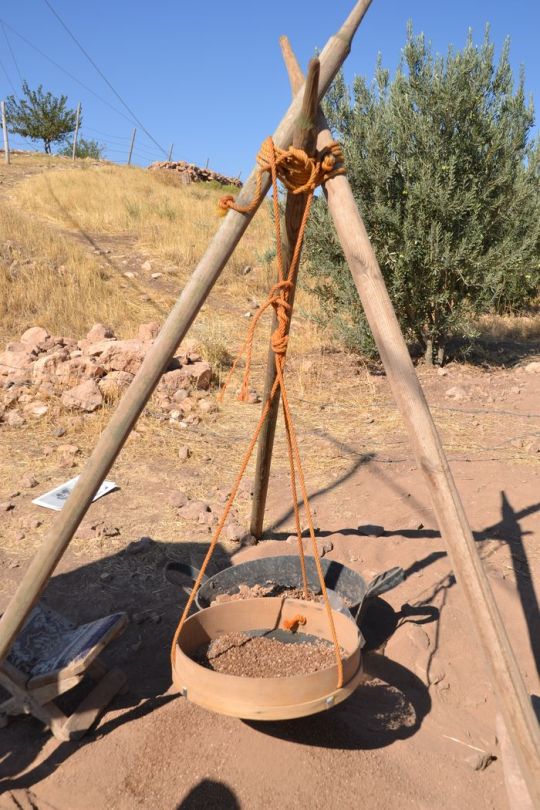
Latten Magism Shops
Zrntrale Aufobusholfettelle’
Tele die I< gne d’autobus Central but Station tjmkle derdume – Zentralstrand Cabinet de I’olle central# de la plogejl Clook’ooim at central beach out either on the sea or on the park. Five lifts, restaurant, tavema — “Melnik 4 — cake shop, four bars with seats, night club, and several conference rooms.
The mineral water has a temperature of 42°C at source.lt is slightly mineralized and is available in tubs at the hotel’s outdoor swimming pool. The balneotherapeutic clinic is equipped with modern electrical and medical apparatus. Treatments: curative tub dipping, massage, inhalation with sea water electrolux, sauna, scolarium, mud treatment and remedial exercises. The water is recommended for inflammatory and degenerative diseases of the locomotory system, chronic neuralgia, radicolitis, plexit, hypertension, atherosclerosis and mental fatigue. A slimming programme is also available.
The Joliot-Curie International House of Scientists, with 250 beds, is not far from the Varna Hotel. It has three conference rooms with facilities for simultaneous translation into four languages turkey sightseeing. ‘Mineral water treatment can be taken here under medical supervision.
Ralkantourist Bureau is at the Roubin Hotel, tel. 6-10-20. Varna (pop. 291, 224), Bulgaria’s third largest city is situated on the Black Sea coast at the head of Varna Bay between the Frangensko tableland to the north and the slopes of the Avren tableland to the south. It has a moderate continental climate with a mild humid winter and a warm dry summer. The mean annual temperature is 12°C.
The site of present-day Varna was inhabited in the Stone Age, traces of settlements have been found in the village of Beloslav and in the Pobiti Kamum (Stone Forest) area.
According to ancient chroniclers
According to ancient chroniclers, Varna was founded in the 4th century B.C. by Greek colonists and was then known as Odessos. In the 3rd-2nd century B,C. it was a flourishing town minting its own coins which bore the image of the Thracian god Darsala. In 72 B.C. it was conquered by the Romans but retained is autonomy until the establishment of the Roman province of Lower Moesia in the early years of the Christian era. After the division of the Roman Empire, the town came within the boundaries of the Eastern Roman Empire (Byzantium). It was surrounded by anew fortress wall and within that wall were temples, theatres, baths and stadiums. Later on, during the Christian era many churches were built, traces of which can still be seen (the basilica in Tsar Kroum St. and the Djanavar Tepe and Tourna Tepe churches). At the end of the 6th century the Slavs settled here, giving it the name of Vania, and in 681 it was captured by the proto-Bulgarians led by Khan Asparouh. It became a Bulgarian town in 1201 during the reign of Tsar Kaloyan.
In 1389 Vama fell under Ottoman rule. The town gained prominence in 1444 through the crusade led by Wladislaw III (Warnenczik). The crusaders reached Varna but were defeated in a major battle nearby and Wladislaw III was killed. There is now a mausoleum to Wladislaw Warnenczik on the site where the battle was fought.
The Ottoman rulers turned Varna into an important military and strategic point. They extended its fortifications, making it part of the fortified quadrangle Rousse-Shoumen- Varna-Silistia. In 1828 a strong Russian fleet attacked the town, captured it and remained there for two years.
On July 27 1878 the town was liberated by Russian troops. Economy and culture developed rapidly. Small industrial enterprises were set up and the working-class movement began. Late in the 19th century the first socialist group was set up. Lenin’s newspaper Iskra (Spark) travelled from Switzerland to Russia, passing through Varna.
0 notes
Photo
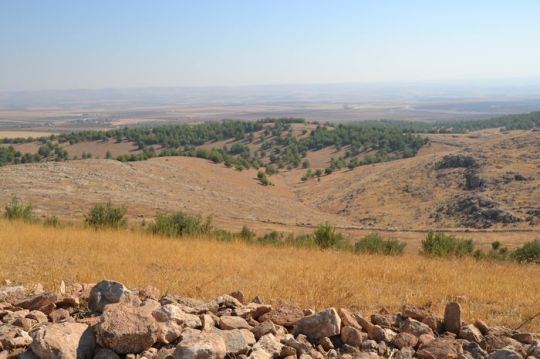
Yantra Railway Station Square
Yantra, Railway Station Square, tel.: 2-48-12 and 2-53-72, two stars, 320 beds, restaurant.
Bouzloudja, Palaouzovo quarter, accommodating 160.
The Inn, 15 Opulchenska St., national tavema.
The Mogdyov compound, May 1st square, restaurant 90, national tavema, 1 Aprilovska Street.
A Rest and Tourism bureau — 2 Opulchenska St.
An open-air museum is 8 km south of Gabrovo, bearing the old name of the river Yantra — Etura, It is an architectural- ethnographic compound, with several workshops which are now an ethnographic rarity. 26 crafts which flourished in Gabrovo during the National Revival are exhibited, and many are originals. There is a two-storeyed Bulgarian house from the Na-
tional Revival Period built in the architectural style typical of the region. The interior design is executed in the folk style of the last century. There is a national tavema on the ground floor. On the right bank of the Sivak River (Yantra’s left tributary) there is a workshop for making knives, the mill, a woodturning lathe for plates and small bowls, a tower, a saw mill.
4 km from the Etura perched on a rock is the Gabrovo (also known as Sokol) monastery, It was founded in 1833, The church with its frescoes (1834) is of particular interest and also the old fountain.
There is a hotel nearby accommodating 50, and a hotel- restaurant sofia guided tours.
VELIK0 TURNOVO – OMOURTAG – TURGOVISHTE – SHOUMEN – PRESLAV – MADARA – NOVI PAZAR – VARNA (240 km)
From Veliko lumovo to the Black Sea coast at Varna, passing through Antonovo (pop. 2,000) — which was important centre during 1943-1944, when the Omourtag partisan detachment operated in this area. Late in 1943 the fascists sent troops, police units and gendarmerie who terrorised the population. 25 km east, along E-771 is Omourtag (pop, 10,200t, founded in the 16th century, the town is now an industrial and agricultural centre.
Our next stop is Turgovishte (pop. 46,000), on the river Vrana. This town was founded during Ottoman rule. In those times it was known as a large fair centre called Eski Djoumaya.
Southeast of the town is a large park with pond and restaurant. A museum has been set up in the old secondary school; the poet and public figure Petko Slaveikov taught here.
0 notes